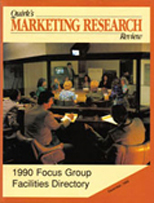Despite risk, smokers vow to keep puffing
Despite a nearly universal view among smokers that they will develop serious lung problems if they continue smoking, they continue to light up. 83% of American smokers interviewed in a national survey by the Wirthlin Group believe they are at risk from emphysema and chronic bronchitis, and two-thirds of them consider themselves addicted to smoking.
The survey showed that only 18% of smokers said they would seek medical help when trying to quit. It also revealed Americans’ fatalism about smoking: 44% of current smokers, and 52% of heavy smokers (more than a pack a day) believe they have already damaged their lungs as a result of smoking.
“Clearly smokers know and feel the harmful effects of cigarettes,” said Sharon Jaycox, manager of Smoking and Health Programs at the American Lung Association. ‘The real challenge is not only to motivate more smokers to quit, but also to encourage those who have made an unsuccessful quit attempt to try again.”
Home buyers rate importance of energy efficiency
A telephone survey among 163 recent home buyers indicates that the concept of energy efficiency becomes relevant only after people have lived in their own homes, reports The Sampler, the Response Analysis newsletter.
The research was conducted for Public Service Electric and Gas Company of New Jersey. According to Frederick A. Lynk, energy conservation manager of the utility, previous homeowners were more than four times as likely to say that energy efficiency was a very important factor in selecting a home than were first-time home buyers.
“First-time buyers in today’s market look upon their first home purchase as a ‘starter’ and are more concerned about down payments and financing than ongoing operation costs,” Lynk explained.
“Those buyers who are seeking to establish a more permanent residence are more energy conscious.
“The buyer who’s already owned a home has had more experience with utility bills and is more aware of energy costs,” Lynk continued. “People are usually willing to invest in energy-saving features the second time around because they expect to realize a pay-back.” The concept of pay-back, Lynk pointed out, deserves consideration by all homeowners because it can result in substantial savings over time.
“Optimum energy efficiency really pays off for the homeowner in terms of energy dollars saved, and it pays off for all of us in terms of conserving our natural resources.”
Let’s eat out
According to a recent TeleNation poll of 1,000 people, 60% said they had made purchases at a fast food restaurant within the last week. On average, respondents said two trips were made during that week.
65% of these fast food fans are male, 45% are female. They also tend to be younger: 67% are under 45 years of age, 57% are over 45. Lunch was the most popular meal (57%), followed by dinner at 44%.
Just over half of those responding said they took their meal out with them; 45% said they dined in. Those choosing to dine in were more likely to be older; 69% of those 65+ years of age ate in, while 64% of those 25–34 years of age took out. About one-third of the people went to the fast food restaurant alone. Men were more likely to dine alone than women by about 17%. Looked at geographically, the Midwest had the largest share of solo diners; 43% ate by themselves. The average group size of those who didn’t eat alone was three people. TeleNation is a service of Market Facts, Inc.
Pete Rose: fair or foul?
As part of an OmniTel study, R.H. Bruskin Associates interviewed 500 baseball fans shortly after the decision to ban Pete Rose from America’s pastime was announced, to get their feelings on the matter. 52% felt the decision was fair, while 42% disagreed. 6% had no opinion.
